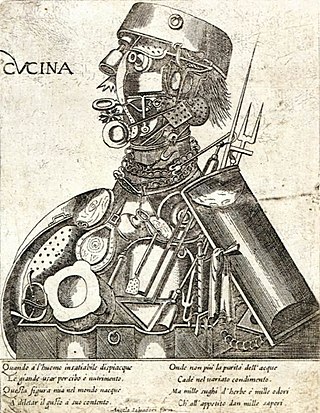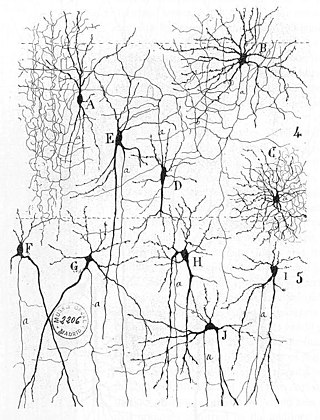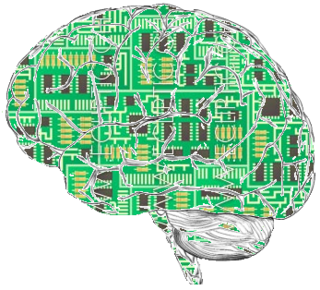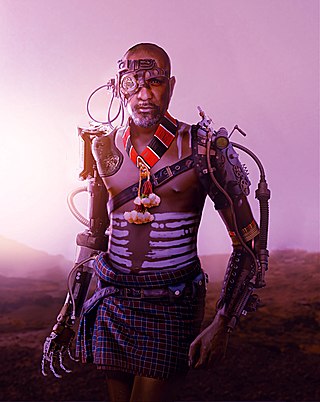 First edition | |
| Author | Robin Hanson |
|---|---|
| Publisher | Oxford University Press |
Publication date | 2016 |
| Pages | 528 |
| ISBN | 9780198754626 |
The Age of Em: Work, Love and Life when Robots Rule the Earth is a 2016 nonfiction book by Robin Hanson. [1]
 First edition | |
| Author | Robin Hanson |
|---|---|
| Publisher | Oxford University Press |
Publication date | 2016 |
| Pages | 528 |
| ISBN | 9780198754626 |
The Age of Em: Work, Love and Life when Robots Rule the Earth is a 2016 nonfiction book by Robin Hanson. [1]
The book explores the implications of a future world in which researchers have not created artificial general intelligence but have learned to copy humans onto computers, creating "ems," or emulated people, who quickly come to outnumber the real ones. [2] [3] [4]
There have been three human eras so far, based on foraging, farming, and industry. The next era is likely to arise from artificial intelligence in the form of brain emulations, sometime in the next century or so. This book paints a detailed picture of this new era.
— The Age of Em
The book's main scenario proposes that in about a hundred years from now, human brains will be scanned at "fine enough spatial and chemical resolution," and combined with rough models of signal-processing functions of brain cells, "to create a cell-by-cell dynamically executable model of the full brain in artificial hardware, a model whose signal input-output behavior is usefully close to that of the original brain." [5]
Seth Baum reviewed the book in Futures. He commended the book for bringing a social science perspective, for the detail it gives, and for providing a starting point for further study. He also criticized some of the book's arguments and stated that different authors would reach different conclusions about the same topic. [6]
The technological singularity—or simply the singularity—is a hypothetical future point in time at which technological growth becomes uncontrollable and irreversible, resulting in unforeseeable consequences for human civilization. According to the most popular version of the singularity hypothesis, I. J. Good's intelligence explosion model of 1965, an upgradable intelligent agent could eventually enter a positive feedback loop of self-improvement cycles, each successive; and more intelligent generation appearing more and more rapidly, causing a rapid increase ("explosion") in intelligence which would ultimately result in a powerful superintelligence, qualitatively far surpassing all human intelligence.

Mind uploading is a speculative process of whole brain emulation in which a brain scan is used to completely emulate the mental state of the individual in a digital computer. The computer would then run a simulation of the brain's information processing, such that it would respond in essentially the same way as the original brain and experience having a sentient conscious mind.
A brain transplant or whole-body transplant is a procedure in which the brain of one organism is transplanted into the body of another organism. It is a procedure distinct from head transplantation, which involves transferring the entire head to a new body, as opposed to the brain only. Theoretically, a person with complete organ failure could be given a new and functional body while keeping their own personality, memories, and consciousness through such a procedure. Neurosurgeon Robert J. White has grafted the head of a monkey onto the headless body of another monkey. EEG readings showed the brain was later functioning normally. Initially, it was thought to prove that the brain was an immunologically privileged organ, as the host's immune system did not attack it at first, but immunorejection caused the monkey to die after nine days. Brain transplants and similar concepts have also been explored in various forms of science fiction.
Artificial consciousness, also known as machine consciousness, synthetic consciousness, or digital consciousness, is the consciousness hypothesized to be possible in artificial intelligence. It is also the corresponding field of study, which draws insights from philosophy of mind, philosophy of artificial intelligence, cognitive science and neuroscience.
Hans Peter Moravec is computer scientist and an adjunct faculty member at the Robotics Institute of Carnegie Mellon University in Pittsburgh, USA. He is known for his work on robotics, artificial intelligence, and writings on the impact of technology. Moravec also is a futurist with many of his publications and predictions focusing on transhumanism. Moravec developed techniques in computer vision for determining the region of interest (ROI) in a scene.

Robin Dale Hanson is an associate professor of economics at George Mason University and a former research associate at the Future of Humanity Institute of Oxford University. He is known for his work on idea futures and markets, and he was involved in the creation of the Foresight Institute's Foresight Exchange and DARPA's FutureMAP project. He invented market scoring rules like LMSR used by prediction markets such as Consensus Point, and has conducted research on signalling. He also proposed the Great Filter hypothesis.

Embryo space colonization is a theoretical interstellar space colonization concept that involves sending a robotic mission to a habitable terrestrial planet, dwarf planet, minor planet or natural satellite transporting frozen early-stage human embryos or the technological or biological means to create human embryos. The proposal circumvents the most severe technological problems of other mainstream interstellar colonization concepts. In contrast to the sleeper ship proposal, it does not require the more technically challenging 'freezing' of fully developed humans.
An artificial brain is software and hardware with cognitive abilities similar to those of the animal or human brain.

A wetware computer is an organic computer composed of organic material "wetware" such as "living" neurons. Wetware computers composed of neurons are different than conventional computers because they use biological materials, and offer the possibility of substantially more energy-efficient computing. While a wetware computer is still largely conceptual, there has been limited success with construction and prototyping, which has acted as a proof of the concept's realistic application to computing in the future. The most notable prototypes have stemmed from the research completed by biological engineer William Ditto during his time at the Georgia Institute of Technology. His work constructing a simple neurocomputer capable of basic addition from leech neurons in 1999 was a significant discovery for the concept. This research was a primary example driving interest in creating these artificially constructed, but still organic brains.

Mind uploading—transferring an individual's personality to a computer—appears in several works of fiction. It is distinct from the concept of transferring a consciousness from one human body to another. It is sometimes applied to a single person and other times to an entire society. Recurring themes in these stories include whether the computerized mind is truly conscious, and if so, whether identity is preserved. It is a common feature of the cyberpunk subgenre, sometimes taking the form of digital immortality.
Robotics is the branch of technology that deals with the design, construction, operation, structural disposition, manufacture and application of robots. Robotics is related to the sciences of electronics, engineering, mechanics, and software. The word "robot" was introduced to the public by Czech writer Karel Čapek in his play R.U.R., published in 1920. The term "robotics" was coined by Isaac Asimov in his 1941 science fiction short-story "Liar!"

The Future of Humanity Institute (FHI) was an interdisciplinary research centre at the University of Oxford investigating big-picture questions about humanity and its prospects. It was founded in 2005 as part of the Faculty of Philosophy and the Oxford Martin School. Its director was philosopher Nick Bostrom, and its research staff included futurist Anders Sandberg and Giving What We Can founder Toby Ord.

2081: A Hopeful View of the Human Future is a 1981 book by Princeton physicist Gerard K. O'Neill. The book is an attempt to predict the social and technological state of humanity 100 years in the future. O'Neill's positive attitude towards both technology and human potential distinguished this book from gloomy predictions of a Malthusian catastrophe by contemporary scientists. Paul R. Ehrlich wrote in 1968 in The Population Bomb, "in the 1970s and 1980s hundreds of millions of people will starve to death". The Club of Rome's 1972 Limits to Growth predicted a catastrophic end to the Industrial Revolution within 100 years from resource exhaustion and pollution.

A cyborg —a portmanteau of cybernetic and organism—is a being with both organic and biomechatronic body parts. The term was coined in 1960 by Manfred Clynes and Nathan S. Kline. In contrast to biorobots and androids, the term cyborg applies to a living organism that has restored function or enhanced abilities due to the integration of some artificial component or technology that relies on feedback.
This list compares various amounts of computing power in instructions per second organized by order of magnitude in FLOPS.

The 2045 Initiative is a nonprofit organization that develops a network and community of researchers in the field of life extension, focusing on combining brain emulation and robotics to create forms of cyborgs. It was founded by Russian entrepreneur Dmitry Itskov in February 2011 with the participation of Russian specialists in the field of neural interfaces, robotics, artificial organs and systems. Philippe van Nedervelde serves as the Director of International Development.
Hypothetical technology is technology that does not exist yet, but that could exist in the future. This article presents examples of technologies that have been hypothesized or proposed, but that have not been developed yet. An example of hypothetical technology is teleportation.
Existential risk from artificial intelligence refers to the idea that substantial progress in artificial general intelligence (AGI) could lead to human extinction or an irreversible global catastrophe.
Some scholars believe that advances in artificial intelligence, or AI, will eventually lead to a semi-apocalyptic post-scarcity and post-work economy where intelligent machines can outperform humans in almost every, if not every, domain. The questions of what such a world might look like, and whether specific scenarios constitute utopias or dystopias, are the subject of active debate.